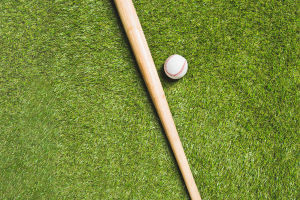Curling, often described as "chess on ice," is a sport that combines strategy, precision, and teamwork on a meticulously groomed sheet of ice.
Amidst the graceful gliding of stones and the precise movements of players, one peculiar sight often stands out to spectators and newcomers alike: the frequent and diligent sweeping of the ice surface by team members.
But why is it necessary to constantly wipe the floor while curling?
The Science Behind Sweeping
At first glance, sweeping the ice in curling may seem like a mundane task, but its importance lies deeply in the physics of the game. When a player releases a curling stone, it sets off on a journey down the ice, encountering various forces that affect its speed, trajectory, and curl. One of the primary factors influencing the stone's movement is friction between the stone and the ice surface.
Reducing Friction
Friction, the resistance encountered when one object moves over another, plays a significant role in curling. As the stone travels over the ice, it creates friction, generating heat and pressure that melt the ice beneath it, forming a thin layer of water. This layer of water acts as a lubricant, reducing the friction between the stone and the ice and allowing the stone to travel farther and straighter.
The Role of Sweeping
Sweeping is a method used to manipulate this frictional force. When a player vigorously sweeps the ice in front of the stone, they generate frictional heat that warms the ice and effectively melts the thin layer of water. By doing so, they reduce the amount of friction between the stone and the ice, enabling the stone to travel with greater speed and carry farther down the sheet.
Control and Direction
Furthermore, sweeping can influence the stone's direction of travel. By sweeping on one side of the stone while it's in motion, players can alter the amount of curl, or lateral movement, the stone experiences. This manipulation of the stone's path adds another layer of strategic complexity to the game, as teams aim to place their stones in advantageous positions while impeding their opponents' efforts.
The Importance of Clean Ice
The effectiveness of sweeping also depends on the quality of the ice surface. Clean ice, free from debris and frost, allows for optimal sweeping conditions. Debris on the ice can hinder the movement of the stone and impede the effectiveness of sweeping, emphasizing the importance of maintaining a clean playing surface throughout the game.
Strategic Considerations
In addition to its technical aspects, sweeping plays a crucial role in team strategy. Teams must decide when and how much to sweep based on various factors, including the weight of the stone, the desired curl, and the presence of opposing stones. This strategic element adds depth to the game, requiring teams to make split-second decisions that can ultimately determine the outcome of a match.
Physical Demands and Teamwork
Beyond its strategic importance, sweeping also involves physical exertion and teamwork. Sweeping vigorously for extended periods requires strength, stamina, and coordination. Moreover, effective communication between teammates is essential to synchronize sweeping efforts and maximize their impact on the stone's trajectory.
Tradition and Ritual
Sweeping has become an iconic aspect of curling, deeply ingrained in the sport's culture and tradition. From the rhythmic swishing sound of brooms on ice to the synchronized movements of players, sweeping adds a visual and auditory spectacle to the game, captivating audiences worldwide. Moreover, the ritual of sweeping serves as a symbol of teamwork, camaraderie, and shared effort among players striving for a common goal.
Far from being a simple chore, sweeping in curling is a fundamental aspect of the sport that intertwines physics, strategy, tradition, teamwork, and even a bit of ritual. By understanding the science behind sweeping and its strategic implications, spectators and players alike can appreciate the intricacies of this captivating sport. So the next time you watch a curling match, pay close attention to the sweeping—it's not just cleaning the ice; it's a vital part of the game that embodies the spirit and essence of curling itself.


